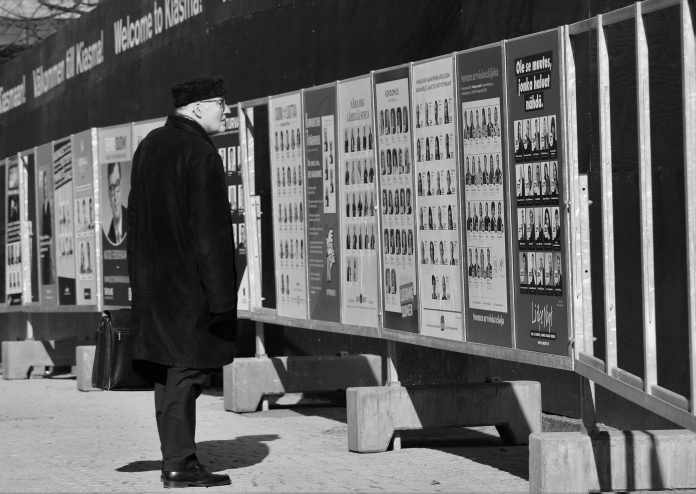Sunday’s vote is crucial for Finland’s future since no clear winner is expected to emerge. According to the polls political parties’ score will be under 20%. The Social Democratic Party is leading the race. However a new coalition is possible between the Social Democrats, the Greens, the liberals and the Swedish minority’s party.
This time national elections matter for the EU as well. Finland will succeed Romania in the rotating Presidency of the Council on July 1.
Among the topics that played a key role during the electoral campaign were welfare and climate change.
Welfare and migration
Finland’s big problem is that the 5,5 million population is rapidly aging. As a result the core of the welfare system is directly threatened.
The politics of austerity applied by the previous coalition government succeeded in restoring the country’s economic situation but provoked insecurity among citizens. The failure to pass a health-care reform turned electoral base against the coalition parties, the Centre Party of the Prime Minister Juha Sipilä, the National Coalition Party of Petteri Orpo and the Blue Reform party.
In an attempt to convince the electorate the Social Democrats associated the problem of an aging population with immigration and asylum seekers debate.
According to them, the Finnish population is rapidly aging. This is why labour shortages appears. As a result Finland’s welfare system is severely threatened. The country needs more working hands. Instead of importing them it could be better to try to integrate into the labour market unsuccessful asylum seekers.
“[They should] get to work and quickly. Language training and then to work,” SDP’s leader Antti Rinne said in an election debate on Thursday.
Rinne wants to raise taxes and increase public spending as well.
In the opposite side stays the far-right Finns party with its anti-immigration rhetoric. Its leader Jussi Halla-aho, a member of the European Parliament, advances an increasingly tough policy against migrants and especially against the asylum seekers.
Climate change
Climate change debate in Finland is very popular since nuclear and renewable energy is prioritized.
The country plans to launch a new nuclear plant in 2020 and the Parliament voted to phase out burning coal by 2029.
Most of the political parties encourage a policy towards less meat consumption and favour vegetarian food offer in public places. Finland supports electric vehicles.
If the Social Democrats succeed to form a coalition government they will apply such a policy.
In the other side stands the Finns party. The far-right embraces climate change denialism’s arguments and opposes such a radical policy concerning food.
Most parties don’t want to deal with the Finns
After a painful split in 2017 the far-right Finns party increases its influence and is contesting the second position in Sunday’s vote.
The Finns party, originally named the True Finns, was established on a typical far-right platform.
Halla-aho, now leader of the party and MEP, expressed hard far-right views more than once. In 2008-2009, he was investigated for ‘ethnic agitation’. He is known for his anti-Islam and racists rhetoric while in 2011 he proposed, via Facebook, that the solution for Greece’s debt problems was nothing less than a military junta. On 8 June 2012, he was found guilty by the Supreme Court for disturbing religious worship and provoking ethnic agitation for his statements about Muhammad.
Many MPs of the party have made racist public statements. Among other cases in October 2013, an MP invited a neo-Nazi activist as his guest to the parliament and did not react when his guest made several Nazi salutes.
Halla-aho became the leader of the Finns Party in 2017 after an internal fight against those who served as Ministers in the coalition government. Despite his views his party is a member of the European Conservatives and Reformists (ECR) Group.
Nevertheless on April 8 the Finns party participated in a far-right meeting organised by the Italian vice-Prime Minister Matteo Salvini. During the meeting Salvini announced the creation of a new Group in the next European Parliament which will be called European Alliance of Peoples and Nations (EAPN). The Finns said will join the group. The German Alternative for Germany (AfD) and the Danish People’s Party (DF) will join it as well.
The Finns Party has seen its influence surge during the last month. However most parties don’t want to deal with the far-right party.
Is a progressive coalition possible?
To form a government, it is necessary a 101-seat majority in the 200-seat Eduskunta (the parliament).
Latest polls show the SDP will get a 19% of the votes. The Finns and the National Coalition Party fight for second place with 16,3% and 15,9% respectively. Follow the Centre Party with 14,5%, the Green League with 12,2% and the Left with 8,7%.
Since most of the parties exclude the possibility of a coalition with the Finns, a progressive coalition government headed by the Social Democrats seems the best alternative.
The National Coalition Party, the Green League and the Swedish minority Swedish People’s Party of Finland could join such a coalition.

